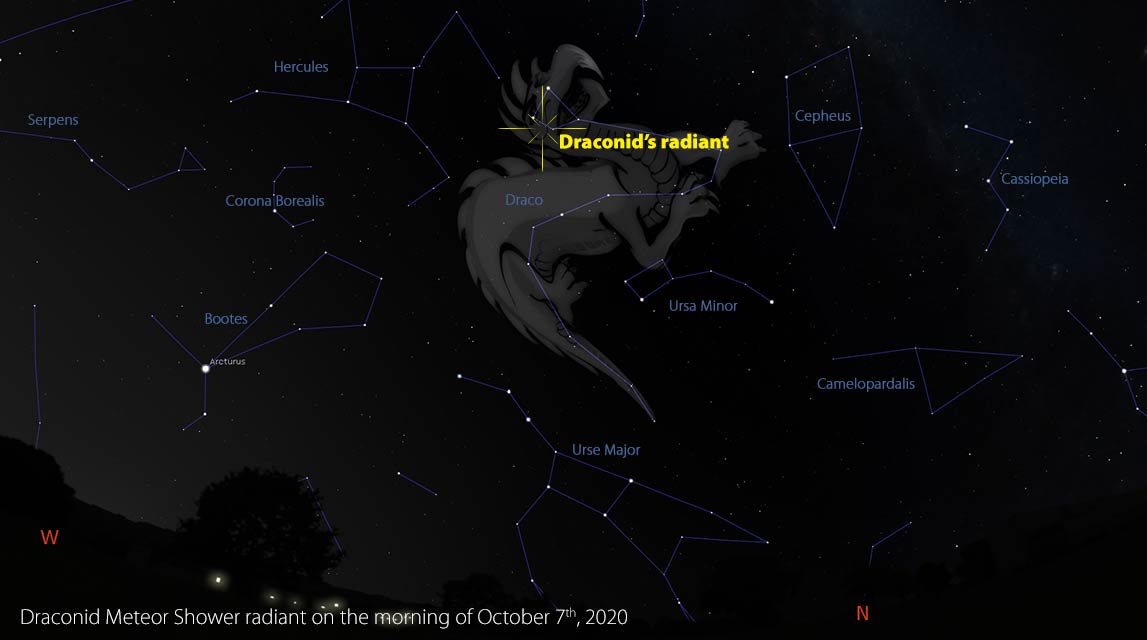Each year around October 8th the Earth passes close to the orbit of comet 21P/Giacobini-Zinner. In most years only a few meteors are seen from the “head” of Draco during this time. This year though may produce a bit more activity as Jérémie Vaubaillon (IMCCE – Institute for Celestial Mechanics and Computation of Ephemerides, Paris) has predicted the Earth will pass close to two comet trails produced by 21P/Giacobini-Zinner in 1704 and 1711. Peter Jenniskens (SETI Institute – NASA Ames Research Center) predicted times of these passages are on October 7 at 01:25 UT for the 1704 passage and 01:57 UT for the 1711 passage. While the radiant will lie above the horizon for a large area of the Earth stretching from western Asia to North America, these timings favor the east coast of North America where the radiant will be located high in the sky at the time of the predicted passages. These meteors can also be seen from tropical areas of the southern hemisphere, but at a reduced rate due to the lower radiant altitude.

To best see these meteors, especially from North America, be ready to observe as soon as it becomes dark on Tuesday evening October 6. The radiant will lie high in the northern sky about 30 degrees higher up in the sky than Polaris, the north star. The four stars called the “Lozenge”, with represents the head of Draco, make the radiant easy to locate as it lies just west of this star pattern. Three of the four stars marking the Lozenge easily visible to the naked eye. All meteors from this source will have their paths trace back to the radiant. Unlike most meteor showers, meteors from the Draconids are slow and will often last a full second or two.
All potential observers with clear skies are encouraged to view the sky for potential Draconid activity around October 7. These meteors are often faint so it would help to observe from rural areas where interfering lights are less of a problem. The more stars you can see, the more meteors you will witness. The waning gibbous moon will not rise until late in the evening so there is an opportunity to view under dark conditions for several hours between dusk and moon rise. While observing it is advisable to be as comfortable as possible by using a loungechair. Don’t forget a blanket as October evenings can be cool.
The International Meteor Organization offers tips on holding a visual meteor sessions. Observers are also encouraged to share their observations by filling out an online meteor form. Note that the online form is only available to registered members of the International Meteor Organization. One can register for free on the IMO Website.
Source: 2020 Meteor Shower Calendar, by Jürgen Rendtel, Page 15



 You saw something bright and fast? Like a huge shooting star? Report it: it may be a fireball.
You saw something bright and fast? Like a huge shooting star? Report it: it may be a fireball.  You counted meteors last night? Share your results with us!
You counted meteors last night? Share your results with us!  You took a photo of a meteor or fireball? You have a screenshot of your cam? Share it with us!
You took a photo of a meteor or fireball? You have a screenshot of your cam? Share it with us!  You caught a meteor or fireball on video? Share your video with us!
You caught a meteor or fireball on video? Share your video with us!